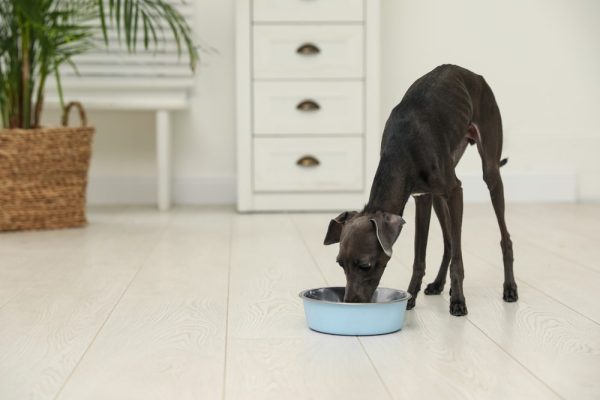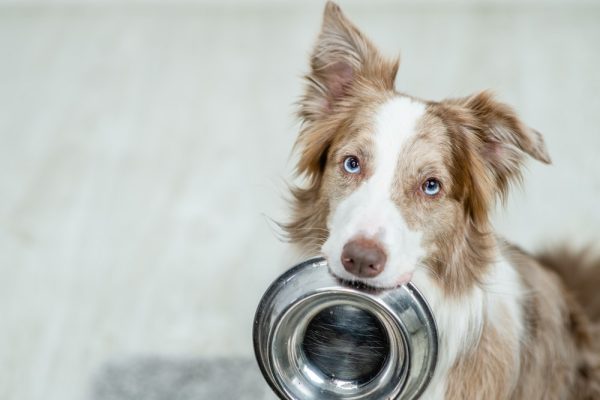In this article
Dogs are one of the most popular pets in the world and ferrets, for their part, are gaining more and more popularity as pets each day. If you want to have both animals in your household, you will be glad to hear that it is possible. Dogs and ferrets can get along, but with supervision. Let’s dig deeper into what to expect from this unique household combination.

Can All Ferrets Live With All Dogs?
Ferrets can live with dogs, but there are special considerations you have to follow regarding a dog’s personality, breed, and age. Here are some criteria one must consider before introducing a dog to a ferret.
Avoid Hunting Dogs
Some dog breeds and ferrets are not a good combination due to the dog’s nature. Hunting dogs like Terriers, Pointers, Setters, etc. may not get along with a ferret, so consider the temperament, history, and personality of your dog before thinking about introducing them to a small, fast-moving creature like the ferrret. Also, if you own a dog with a high prey drive, no matter the breed, it is not a smart idea to introduce them to a ferret. In those two cases, due to the ferret’s size, a dog can confuse a ferret with prey and attack them.
Avoid Introducing Old or Sick Pets
If there is an old or a sick pet in your household, you should think about this situation hard. Most old pets aren’t interested in younger ones, they tend to ignore them. So, if you introduce a young animal to the old one and you can see that the old one isn’t interested, stop with the introduction. The young animal can cause stress to the older one simply by jumping around them or inviting them to play. A younger, more hyper ferret may also irritate an older dog and cause them to lash out.

How To Introduce Dogs and Ferrets
The most important thing you can do in a relationship between a ferret and a dog is to gradually introduce them. Their introduction should last from a few days to a few weeks and they should always be supervised, no matter how well they take to each other. Initially do scent exchange, so the two animals become aware of each other’s presence in the home. Some ferrets may react unfavorably to the scent of an unfamiliar animal, perceiving it as a threat, so make sure to wash your hands before handling them.
Their first meeting should be on neutral grounds so that they don’t need to feel like they have to defend their territory. Here are the steps you can do to introduce your ferret and a dog properly:
1. Let Them Be Near One Another
Put your ferret in a cage and let the dog come near the cage so they can smell each other. You can leash your dog for this step since you don’t know how they will react in the first few minutes. Give them time to smell each other and if you see any sign of fear or aggression, stop the introduction and try again later. If they are relaxed or curious around each other, you can go to the next step. Make sure you keep an eye on the dog since they can do much more damage if triggered. Continue this process until both animals are relaxed and uninterested around each other, and reward this behavior with praise and treats. This step may take days or weeks and should not be rushed.
2. Remove The Cage
This is a step where both animals are able to approach and smell each other without a barrier between them. Ask a family member to help and hold your dog on a leash, without putting too much pressure on, and you can hold the ferret. Hold your ferret in your arms and come near the dog so they can see and smell the ferret, but make sure to observe the ferret’s body language. If they get scared, back away and let them choose where they want to go or hide, as trying to hold them in that instance can cause them to bite out of fear. Also look at your dog’s reaction every step of the way. If you see any sign of aggression or fear, abort and go back to Step 1. If both parties remain calm, you can stay like that for a minute or so, praising and rewarding both animals for desirable behavior. Repeat this step multiple times before proceeding.

3. Put The Ferret On The Ground
Now it is time to see how your dog reacts with a ferret on the floor. But, before you do that, place a box or a tunnel near the ferret. That can be an escape route for a ferret if things go badly because a dog won’t be able to follow the ferret through a small hole. Now that the ferret is on the floor, keep the dog leashed and watch their posture. If the dog is alert, keep them under your supervision and distract them if needed. If the dog is relaxed or playfully curious, still keep them under supervision, but simply observe and reward the behavior.
It’s best in most cases to extend this process for a good few months, or to even make it the desirable way to let the two pets interact. It will give both of them the opportunity to become comfortable and relaxed around each other, without rushing their interactions, while staying safe. After all, ferrets playing and running around can make the dog want to chase them, while playful or overly excitable dogs can scare a ferret, taking a step back in the introduction process.
4. Loosen The Leash
If your dog and ferret have been acting calm around each other for at least a few months, you can consider loosening the leash from the dog, but still consider keeping them on a long lead. Keep the tunnel or the box on the floor for the ferret, and be ready to intervene, but remain calm. Maintain constant supervision at all times as even after months of appropriate interaction, there could still be an incident. Sudden movement from the ferret could trigger the dog’s desire to chase which could lead to serious injuries. Before the scheduled and supervised interactions, it’s best to exercise the dog in order to make them calmer. Observe the both animals’ body language closely and be prepared to intervene if necessary.

Safety Issues
If your dog and your ferret get along very well from the moment they’ve met, that is great. But, that doesn’t mean you can leave them unsupervised. A dog and a ferret should always be under your supervision to keep them both safe for many different reasons.
Issues With Big Dogs
If you own a big dog that loves ferrets, you have to keep them supervised because something as silly as a game of chase can be dangerous for a ferret. A big dog can accidentally step, sit, or even lay on a ferret, which will result in an injury. In this situation, your supervision can mean life or death for your ferret.

Triggering Issue
Also, no matter how good they are together, every pet can be triggered. If a dog bites a ferret, even as part of a game, that can be quite serious for a ferret. By keeping them under supervision, you can prevent an innocent game from escalating to something much more serious. Remember, only a second is enough for an accident to happen.
What If They Don’t Get Along?
Every pet has a unique personality so there is always a chance that they will not get along. If that happens, no matter how long they coexisted peacefully before, you should keep them apart at all times after any big incident. If you have space, you can set one room to be a “ferret room” which is forbidden for the dog. If you don’t have a spare room, then you should organize your home that way to keep your ferret safe at all times. What you have to do is remove the dog from the room when a ferret is released from the cage. When a ferret sleeps, you can keep them in the cage and let the dog in the room again.

Final Thoughts
One of the reasons why we love dogs is that they are filled with love and curiosity. Dogs that have been properly socialized are more likely to get along just fine with ferrets. But accidents can happen, so no matter how good your ferret and dogs are at living together, keep them under your supervision at all times.
Related reads:
- Can Ferrets Eat Dog Food? What You Need to Know!
- Can Dogs & Pet Rats Get Along? 6 Vet-Approved Ways to Help It
Featured Image Credit: Couperfield, Shutterstock


















